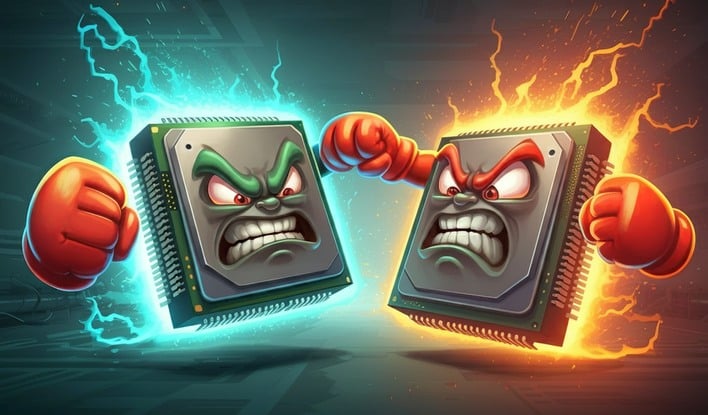

So what is it? Well, it’s a Ryzen AI 9 HX 370 with a tiny clock bump on the NPU. If you compare the official specifications page from AMD for the HX 375 against the same page for the HX 370, quite literally the only difference is that AMD rates the NPU for “up to 55 TOPS” rather than “up to 50 TOPS.”
It should come as no particular surprise, then, that the Ryzen AI 9 HX 375, appearing for the first time in the Geekbench browser, puts up a score functionally identical to that of the Ryzen AI 9 HX 370. The single-core score is within 1% of results for the Ryzen AI 9 HX 370 like the one in the lovely ASUS Zenbook S 16 that we reviewed back at the end of July. Meanwhile, the multi-core score is a little higher, which may indicate a raised TDP for the flagship HX 375 model.

CPUs sorted by multi-threaded score.
In comparison to Intel’s parts, we see the Core i9-14900HX—Intel’s fastest mobile part to date—put up a solid fight in multi-core performance thanks to having literally twice as many CPU cores as the Strix Point CPU, but it takes a loss in single-core speed—as does almost everything else on the chart, actually. Even Qualcomm’s fastest CPU has to kneel to the Ryzen AI 9 HX 375. The only faster chip is AMD’s own Ryzen 9 7945HX, which is really a desktop CPU in laptop clothing.
Of course, it seems a little silly to refer to a Strix Point part as a mobile “flagship” for AMD in light of the “Strix Halo” parts that are on the way. Those chips will have the full-fat desktop Zen 5 core architecture instead of the slightly-neutered version found in Strix Point, and they will also run up to 16 cores, no doubt with much higher power limits. We’re eager to see what the “Ryzen AI Max 300” family can do.
We’re also eager to see what developers finally get going with AMD’s powerful NPU. 55 TOPS is a tremendous amount of horsepower to sit unused in silicon, yet very few Strix Point laptops are actually putting AMD’s XDNA 2 neural compute unit to work. That’s largely because, as we pointed out in our review, the software situation surrounding AMD’s compute hardware still need work. Will NPUs continue to be critical in consumer CPUs, or will they go the way of dedicated physics processors? It’s impossible to guess, but we suspect they’re hear to stay.
